When our donkeys, Molly-Max and Dominic, arrived on the farm last March we thought we’d be keeping them in the corral with access to both the really nice run-in sheds David added years ago as their shelter, and that we’d bring them into the barn on really cold nights in winter.
That all changed the morning after they arrived when Max couldn’t even get up off the ground.
For those of you not familiar with the story of their arrival and the shape they were in when they got here, I’m planning to do a year-in-review type Farm Note when we cross their one year mark of living here on the Little Dream Farm in mid-March.
So, we had to very quickly change gears when they arrived because the Veterinarian who treated Max then (and is our go-to, amazing, wonderful vet!) made it clear that what Max needed most (in addition to a solid nutrition plan and time for his hooves to heal and time for him to get stronger) was not to be on muddy or too-hard ground.
The corral, at the moment, is all mud and the inside of the barn is all concrete. So Chris and I made several trips to Tractor Supply for rubber equine mats that we (just barely) shoved into the Corolla in order to pad the concrete floor of the barn, and we set up an upper and lower pasture for them in the grass around the barn—essentially our yard.
It worked out best that way in the early days because it allowed us to easily keep an eye on them all day long from inside the house and kept Max on grass and out of the mud.
When the LDF cows arrived in May we thought we’d turn the donkeys out with the cows and try some combination of allowing them to roam free with the cows and then calling them back in at night.
The problem with that plan is that most all of Molly-Max’s issues (and Dominic’s weight, for that matter) are because they’d been turned out with cows and grazed on grass most their lives.
What we learned is that unlike cows, horses and donkeys (both in the equine family along with zebras) can “founder” when grazed on too much grass.
To keep it simple, grass has most of its nutrients—and is highest in sugar—in the summer months. It’s also higher in sugar in the morning when there’s dew in the grass. So, equines can graze on fresh grass, but it cannot be their primary form of nutrition as it leads to what’s called “laminitis.”
When a horse, or in this case a donkey, goes lame, essentially that constant sugar high causes inflammation in the hoof between the tissue of the hoof and the coffin bone in the hoof. When this inflammation gets chronic, it leads to founder and can lead to a whole host of other issues too, just like humans and too much sugar.
Laminitis is really serious, because once it begins it has to be continuously managed. You can actually visually see it in the hoof when it gets trimmed. The donkeys have a hoof trimming in about two weeks so I’ll be sure to get some photos and video to show you what it looks like, as you can still see the black striations of laminitis in Molly-Max’s hooves. At his age (20-25 years old) and with how severe his hooves were, they’ll never totally recover and we’ll mostly always be dealing with some kind of hoof issues with Max. So long as we keep up with regular hoof trimmings (we do every 8-10 weeks with our amazing farrier) and keep their barn area clean (since that’s where Max spends most his time) then we should at least be able to keep him comfortable and hopefully pain free.
There are medications you can give donkeys for laminitis, but we’ve decided with our vet to hold off from those for the moment, as they can cause a host of other issues, too.
The best we can do for Molly-Max in addition to the things I mentioned above is to keep giving him good nutrition of quality second-cutting hay (hay is just simply dried grass, and thus most the sugar is removed, and second-cutting hay, done in mid-late summer, happens to be much less coarse than first cutting, which is done early in the summer) as well as the low-sugar feed he gets every other morning.
So that’s a long-winded way of getting to the crux of this Farm Note, which is that come March, we’ll be moving Molly-Max and Dominic to new pasture here on the farm.
It’s becoming critical that we give the space where they’ve spent the past year time to rest—it’s overgrazed, beginning to get really muddy and torn up, and will eventually grow more weeds. Some of you may have seen via our Instagram that we’re beginning to leave their manure on the ground (as opposed to shoveling and clearing it like we normally do) so that they’re manure can fertilize the area. Donkeys will continue to try to eat even overgrazed grass down to the nub, which means they take in more grit, too, and that can lead to digestion issues…just one more reason for us to need to move them.
For the warmer months they’ll now go in the corral as we’d previously planned and then we’re building a permanent grazing pasture behind the corrals so they have more space to roam.
Those rubber equine mats that are currently in the barn will now go up into the big run-in shed, as that has a concrete floor overhang, too. That will serve as their shelter from the wind and rain and then behind the run-in sheds they’ll have a 70’ by 140’ pasture that they’ll have access to daily and all summer long.
The way it will work is in the morning and at night they’ll be in the corral and they’ll get their regular feed in the morning. Then, in the height of the day when the grass has its lowest sugar content, we’ll “turn them out” as it’s called, to graze for the afternoon into dusk.
The nice thing about where we’re moving them to is that there are nice big old trees in the center hedgerow of the farm that will shade their grazing pasture in the afternoon. So while it’ll be hot, they’ll always have lots of shade in this location.
We’re planning to have our electrician stop by and run electricity to the run-in shed so we can hang their beloved fans inside the run-in shed since they love to stand in front of the fans in the summer…and it helps keep the flies off them.
For the grazing pasture, temporarily we’ll use the one-strand electric fencing we’re using for their current area, but this year we’re planning to install a permanent fence with wood posts and high-tensile wire so that they always have that space to call home. I’ve included an example photo below so you have an idea of the direction we’re going. The benefit of this type of fencing (which will also be electric) is that we can graze the eventual sheep (or perhaps other animals!) in this area, too.
Come next winter, likely in mid-November, we’ll move the donkeys back to the barn area so that they have access to more solid shelter in the colder months and it’s easier for us to care for them in the snow/ice.
Last week Chris and I went out to their new pasture area to measure it out and design the area. Sometime this summer we’ll order the fence posts, the high-tensile wire, and our neighbor will be helping us with the post-hole digger on his tractor in order to put the fence in place, build the corners, tension the fence, and electrify it. We’ve been watching lots of videos on how to do it, but we’ll need help and they’ve already built a similar fence for their horses.
Inside the corral, we’re working towards a gravel base to keep them out of the mud and we’re in the process of researching how best to do this for the corral area we currently have. That part of this project is very much in research phase.
If you’ve seen the corral, you know the fencing also needs replaced, so we’ll be re-digging holes to reset the falling and leaned posts and reinstall the fencing around the corral. After years of the LDF cows being corralled there when they arrive on the farm and before they leave, the corral fencing has certainly seen better days. This year we’re working on a different plan with the farmer for how to unload and load the LDF cows that doesn’t include using the corral. More on that once we finalize the details!
Now mind you, when we started this adventure with donkeys we didn’t know any of this stuff I’ve talked about in this Farm Note! If we sound knowledgeable at all, it’s only because we’ve talked to dozens of people, read books and blogs and watched endless YouTube videos, studied horse farms around us, worked with our vet and farrier, and spent many hours plotting, planning, changing plans, readjusting, and constantly learning on the fly and learning as we go.
It’s awesome to look back and see just how much we’ve learned in only a year…it’s even better to look back and see how far Molly-Max and Dominic have come since they got here. When I said I wanted donkeys…I had no idea we’d eventually end up with the world’s sweetest, silliest, coolest, most amazing, huge-personality donkeys. It sounds like we’ve done a lot of work to help them…but in so many ways they’ve saved, changed, and helped us, too.
And so that’s the skinny on the upcoming corral, fencing, and pasture project for the donkeys…and of course we’ll take you along with us as we get this project in motion!
It’s hard to believe that next time we meet here again for another Farm Note it’ll be March already. We’re packing a lot into 2023 and we’re looking forward to each of these projects to come!
If you missed any of our “four things in February” series of Farm Notes detailing some of our other upcoming projects on the farm, you can simply click back to them by clicking any of these three links below:
Thanks for hanging out with us here! What kinds of questions do you have, if any, about this project for the donkeys or any of the other projects we’ve talked about this month?


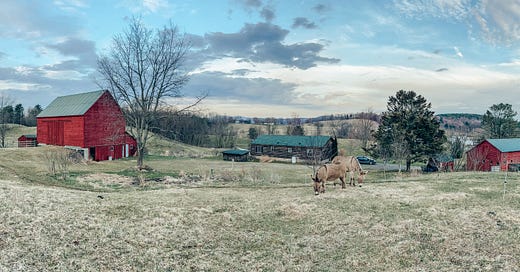



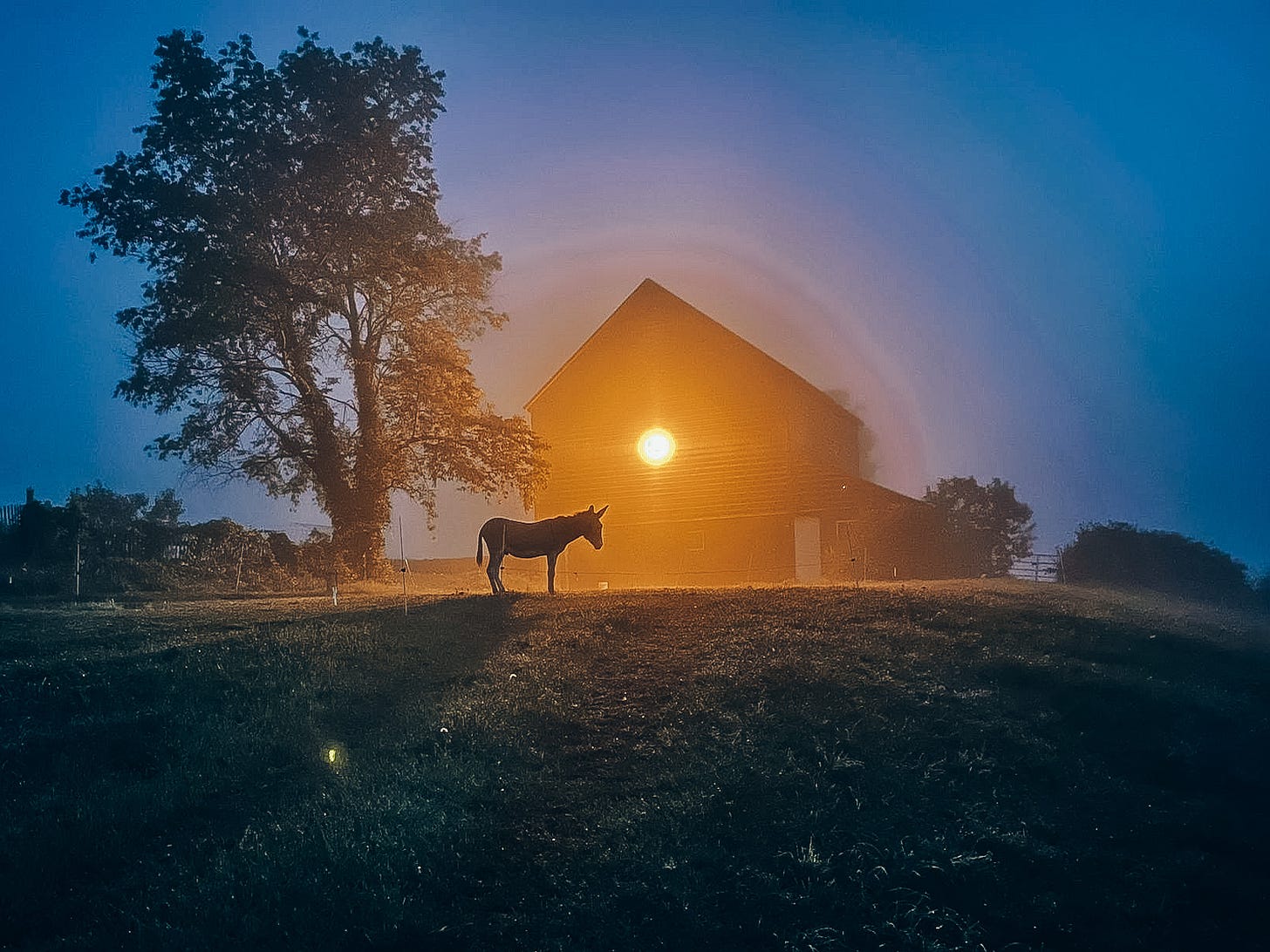
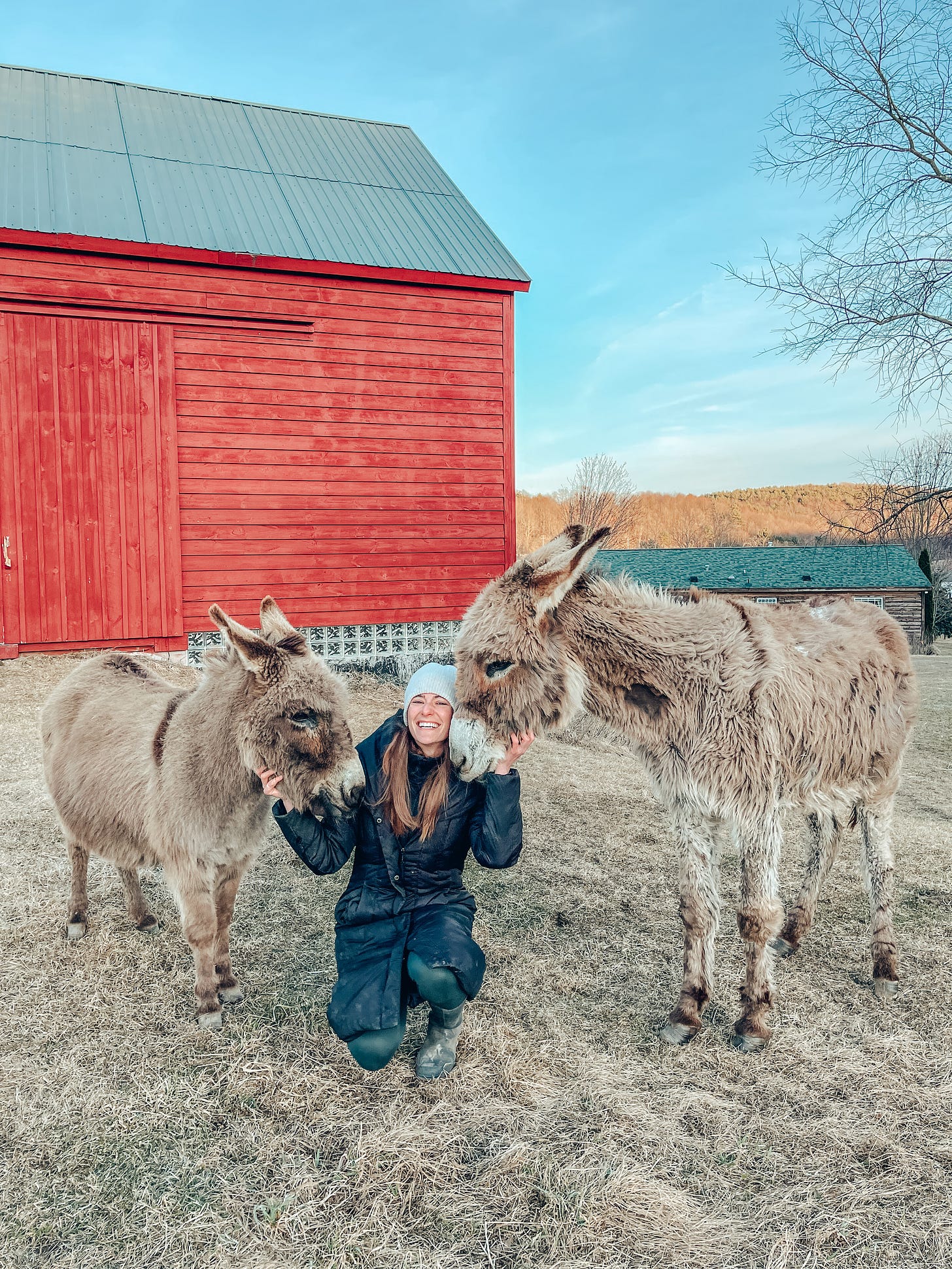
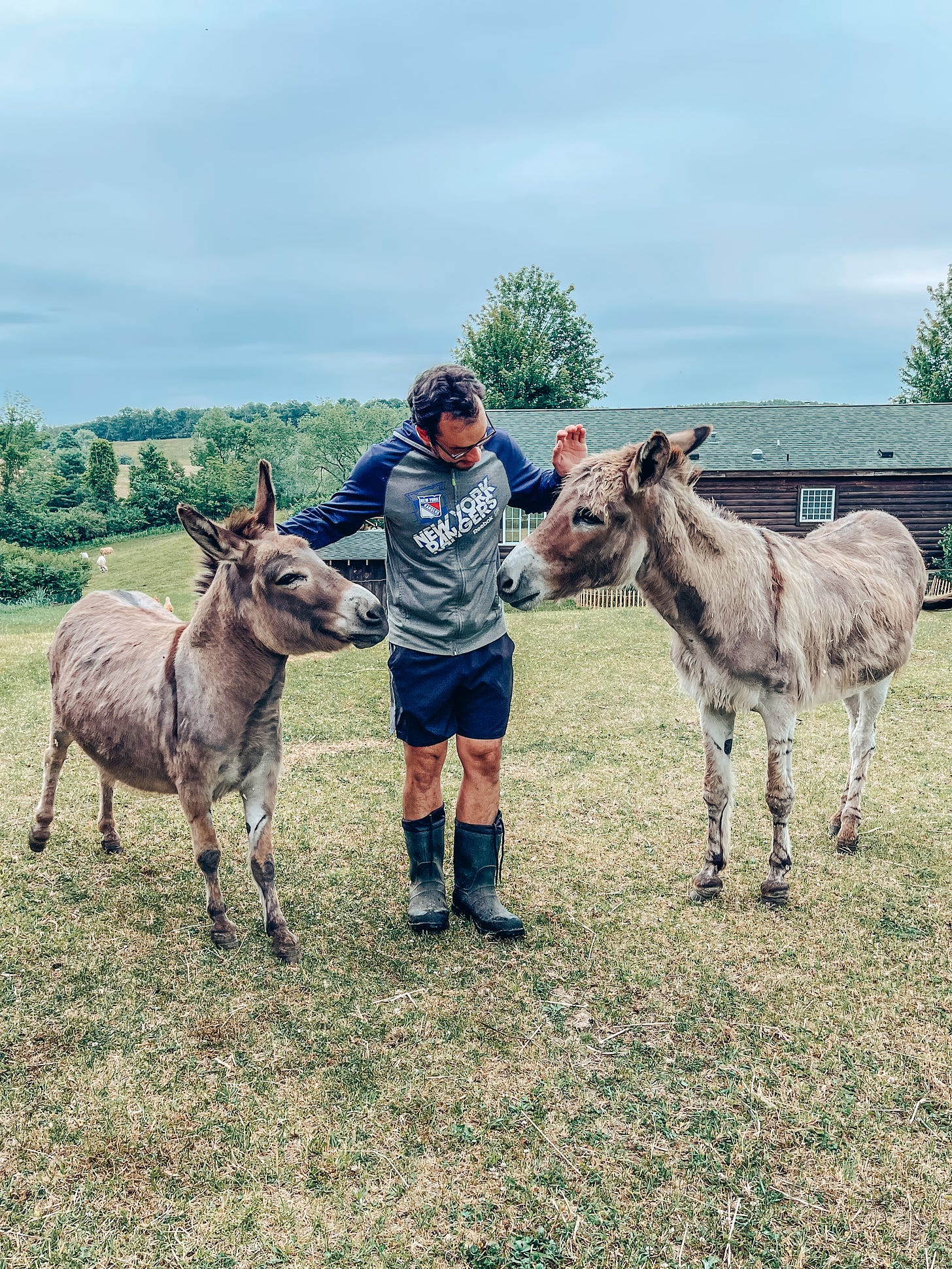
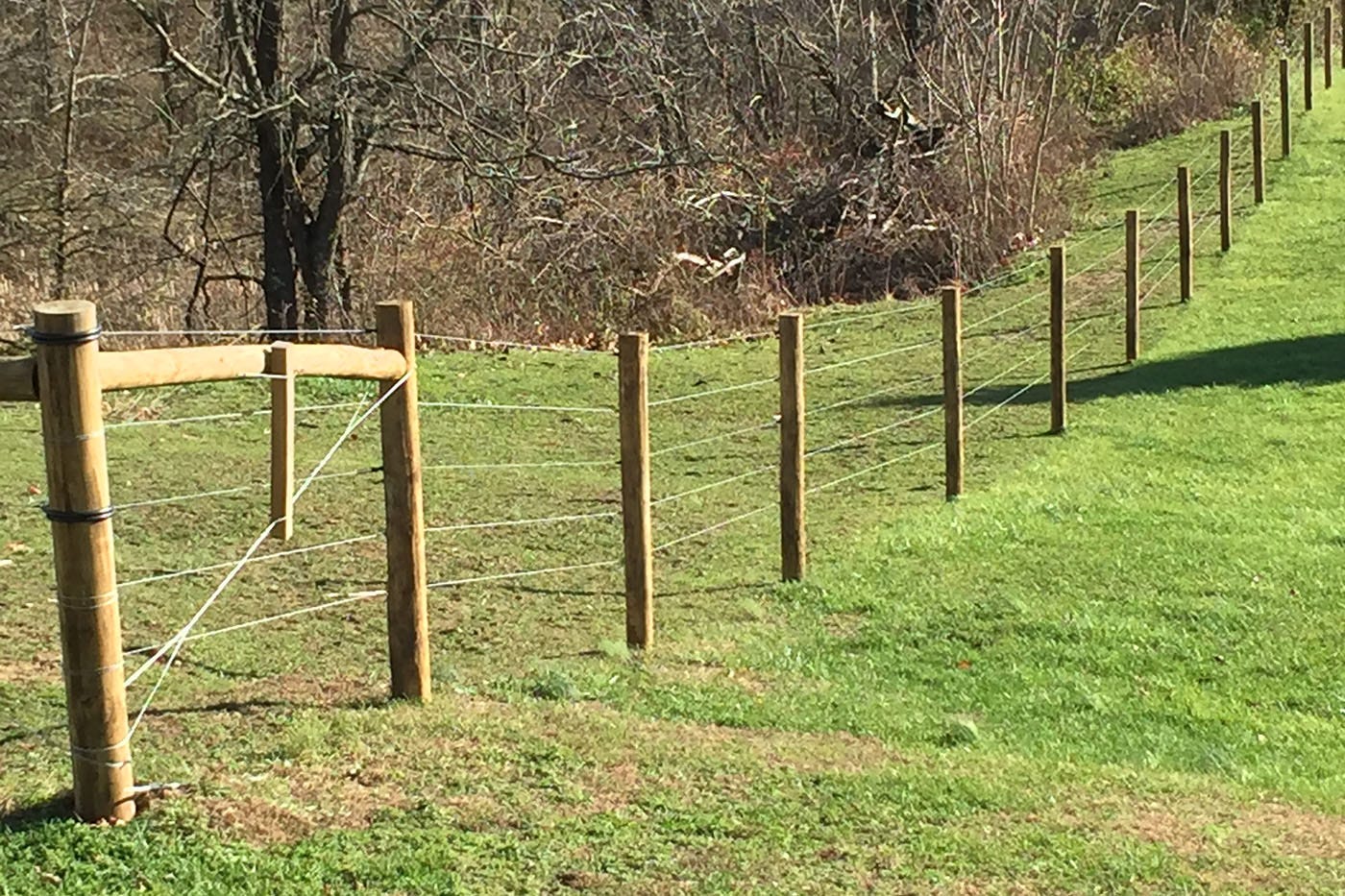
I just love your affection for the donkeys and how they make you laugh. I am curious to know if you were aware of the issues they had when you got them or did the previous owners keep that from you?
You and Chris are truly amazing and dedicated and I am so grateful to be on this journey with you
I keep thinking how the donkeys were and how they are today...I'm so proud of you!!💖